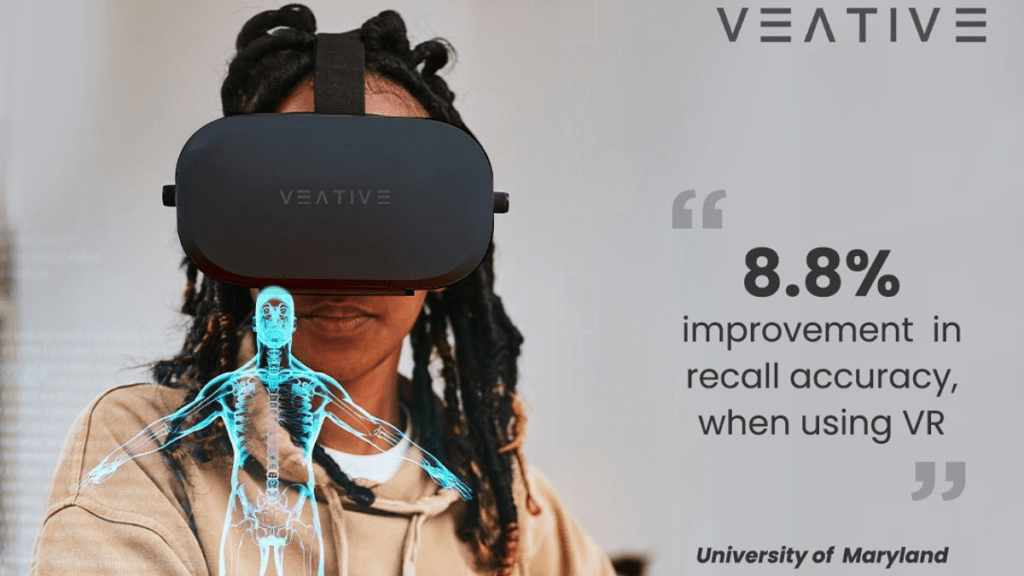
Conceptual Learning with Virtual Reality in Education

In recent years, virtual reality (VR) has been making waves in the field of education. It has the potential to revolutionize the way we learn by providing an immersive, interactive, and engaging learning experience. One area where VR technology is particularly effective is in conceptual learning.
Conceptual learning is a type of learning that focuses on understanding the underlying concepts and principles behind a particular subject or topic, rather than just memorizing facts and figures. In this blog, we will explore how virtual reality can be used to facilitate conceptual learning in education.
What is conceptual learning?
Conceptual learning is a type of learning that emphasizes the understanding of underlying concepts and principles rather than just memorization. It involves the ability to recognize patterns, identify connections, and apply concepts to new situations. In conceptual learning, students are encouraged to think critically, ask questions, and develop a deep understanding of the subject matter.
Why is conceptual learning important?
Conceptual learning is important because it helps students develop a deeper and more meaningful understanding of the subject matter. It allows them to connect different pieces of information and apply their knowledge to real-world situations. This type of learning also helps students develop critical thinking and problem-solving skills, which are essential for success in the 21st-century workforce.
How can virtual reality facilitate conceptual learning?
Virtual reality technology has the potential to facilitate conceptual learning in several ways. First, it provides an immersive and engaging learning environment that can help students understand complex concepts and principles. By creating a virtual environment that represents the subject matter, students can interact with and explore the concepts in a way that is not possible with traditional teaching methods.
Second, virtual reality can help students visualize abstract concepts and ideas. For example, in chemistry, students can use VR technology to explore the structure of atoms and molecules. They can see the movement of electrons and understand how different elements interact with each other. In mathematics, VR technology can help students visualize geometric shapes and understand mathematical concepts like symmetry and congruence.
Third, virtual reality can help students develop spatial reasoning skills. Spatial reasoning is the ability to mentally manipulate and visualize objects in three dimensions. This skill is essential for success in fields like engineering, architecture, and design. By creating virtual environments that require students to navigate and manipulate objects in three dimensions, VR technology can help students develop spatial reasoning skills.
Fourth, virtual reality can facilitate collaborative learning. By creating virtual environments that allow multiple students to interact and collaborate, VR technology can help students develop teamwork and communication skills. This type of learning can also help create a sense of community and engagement among students.
Examples of VR in conceptual learning
One example of how VR technology can facilitate conceptual learning is in the field of biology. In traditional biology classes, students learn about the structure and function of cells through diagrams and models. With VR technology, students can explore the inside of a cell and see how different organelles work together to carry out cellular functions. This type of immersive and interactive learning experience can help students develop a deeper understanding of cellular biology.
Another example of how VR technology can facilitate conceptual learning is in the field of physics. In traditional physics classes, students learn about the laws of motion and other abstract concepts through equations and diagrams. With VR technology, students can experience these concepts in a virtual environment. For example, they can explore the principles of conservation of energy by interacting with virtual objects that demonstrate these principles.
What Educational Benefits Can Virtual Reality Bring?
In conclusion, virtual reality contributes to education by enabling immersive lessons that have a lasting impression on students. These VR learning opportunities boost academic performance and assist students in developing vital social and interpersonal skills that they will need in the future, including empathy and teamwork. Virtual reality is the future of education and a remarkably effective teaching tool.
Virtual reality technology has the potential to revolutionize the way we learn by providing an immersive, interactive, and engaging learning experience. In the field of education technology, virtual reality can facilitate conceptual learning by providing students with an environment that allows them to explore and interact with complex concepts and ideas. By facilitating conceptual learning, VR technology can help students develop a deeper and more meaningful understanding of the subject.